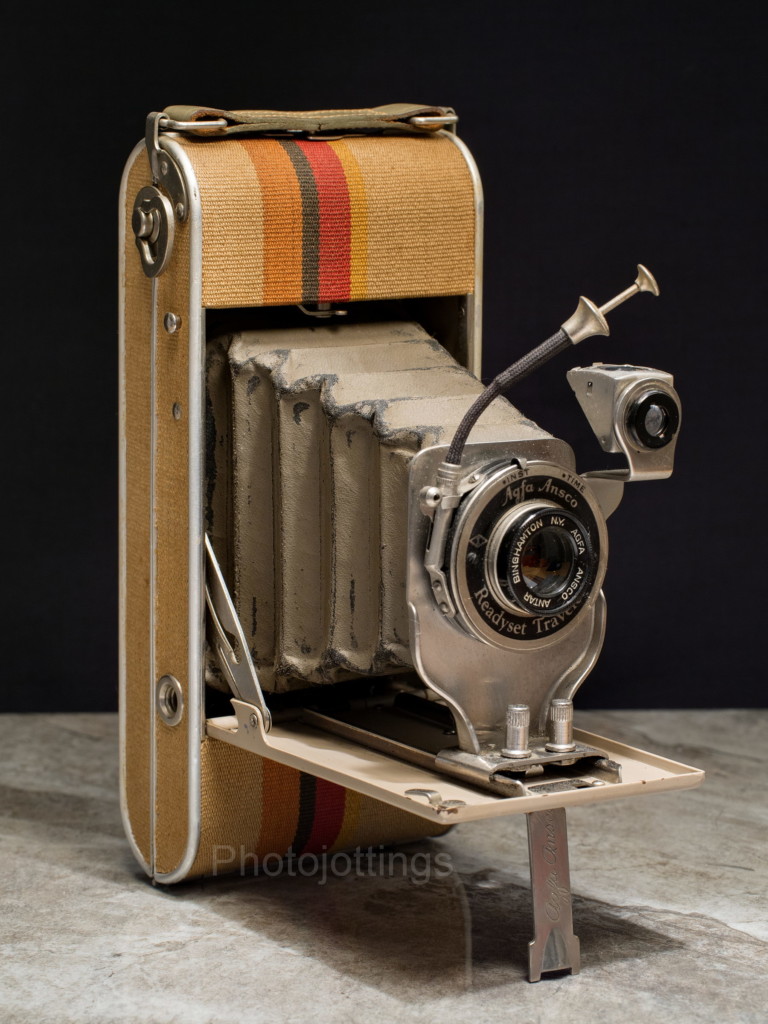
Are you ready for traveling? If so, be sure you take along your Agfa Ansco Readyset Traveler; it’ll make you look really cool, and match your luggage! And let’s not stop there; the ‘Traveler’ is not only a ‘certified picture taker,’ it’s finished in distinctive, specially-woven repp covering with colorful striping that will make you smart and proud to own one, or give as a gift!
I don’t know about you, but I’m ready for traveling—that is; back to the late 1920s and 1930s when these kind of cameras were all the rage. You could get our ‘luggage’ model in four different color stripings, or a Kodak Vanity ensemble complete with a mirror, rouge and a tube of lipstick, or how about an Agfa ‘Silver Fox‘ covering that looks just like fox fur.
Here’s a sales pitch from Agfa Ansco from a 1930 magazine ad.
The Readyset Traveler; from the unbeaten track…from the originality of stylists and camera designers comes the Readyset Traveler. Unquestionably the most outstanding and practical innovation in camera creation of this beauty-conscious day.
In its distinctive specially-woven repp covering, colorful striping, platinum finish and mechanical rightness there is a cosmopolitan air…and expression of the modern spirit that appeals to all who travel, at home or afar. For the Traveler looks like custom made luggage…and is luggage…luggage to pack full of pictures.
The Traveler is a certified picture taker—one you can count on for clear sharp pictures always.
You’ll be proud to own, or give as a gift, the colorful, smart Traveler. For the thrill of its possession is surpassed only by the delight in its remarkable picture taking ability. Ask to see it when you buy your next roll of film.
Available in four different color stripings.
Our colorful review camera for today was manufactured around 1930, and comes with the original tan painted cloth bellows that’s a bit worn with holes and paint loss; a normal condition after nine decades. Based on other pictures of the ‘Traveler,’ I think they all came with the short cable release to trip the shutter; however, the shutter has a separate lever in case you don’t want to use it, or it’s missing. The ‘Readyset’ models were very basic as the name suggests, with nothing more than a shutter button and ‘time’ mode for taking pictures. This camera is as basic as you can get; fixed focus, fixed aperture, and fixed shutter speed, so all you had to do was load the film, extend the lens out and take your picture. There are no settings to worry about, and no creative type shooting to be had.
There are several problems with this camera that make it hard to take my normal test pictures; a leaky bellows, the lack of focusing control, a very low quality viewfinder, and no aperture selections. I could replace the bellows, but it would destroy the look of the camera, and lower the value too. BTW, if you see one of these ‘traveler’ cameras with a black bellows, it means it has been replaced.
Anyhow, let’s take a look at the ‘Traveler’ specifications.
Name; Agfa Ansco Readyset Traveler, No.1, uses 120 film, the No. 1A uses 116 film.
Manufactured by; Agfa Ansco, Binghamton, NY.
Date of manufacture; around 1930.
Price; a 1930 magazine ad lists the No. 1 as $13.00 new. Current eBay prices range anywhere from $50 to $150 or more depending on condition.
Build material; metal, with a painted cloth bellows, glass lenses, and don’t forget the ‘repp’ canvas covering.
Box contents; camera, instruction manual and possibly a matching canvas bag or softcase.
Weight; camera only, 17.5oz (496g).
Dimensions; 6.7″ (170mm) wide, 3.0″ (77mm) tall, 1.4″ (34mm) deep, and 4.9″ (125mm) when extended.
Focal length; 105mm. The camera ‘sees’ about the same as a 50mm lens in 135 format.
Aperture; F/14, not adjustable, but using bulb mode closes the aperture about one stop to F/18.
Focusing distance; fixed around 10-15′ (2.5-5m).
Prints; originally about the same size as the negative, 2¼ x 3¼, all black & white of course with a white border. Due to the lack of aperture and focus controls, large prints will be blurry along the sides; so I’d probably stick with 5×7″ prints.
Lens; 105mm Antar, probably a two element achromat fixed at F/14.
Shutter and speed; rotary type with single speed called ‘instant,’ (my copy averaged 1/33s), but may have been around 1/50s from the factory. Also has ‘time’ mode and works by pressing the shutter button once to open, and again to close.
Features; two ¼-20 tripod sockets, a vertical and horizontal stand for keeping the camera level on a flat surface.
Film; 120, the format for this camera is 2¼ x 3¼, also called 6×9, or ‘B-2’ by Agfa, and is widely available here, B&H, Amazon, eBay.
Other models; there is a No. 1A with identical coverings that uses 116 film for 2½ x 4¼ negatives, (6.5×11).
Accessories for this model; maybe a yellow filter, a portrait and close-up filter; I’m not sure what size was advertised.
Crippling features and omissions; no way to adjust the aperture or focus, which puts the camera in the ‘toy’ category.
Good features; Two ¼”-20 tripod sockets; and a cable shutter release for long ‘time’ exposures.
Product shots with descriptions.
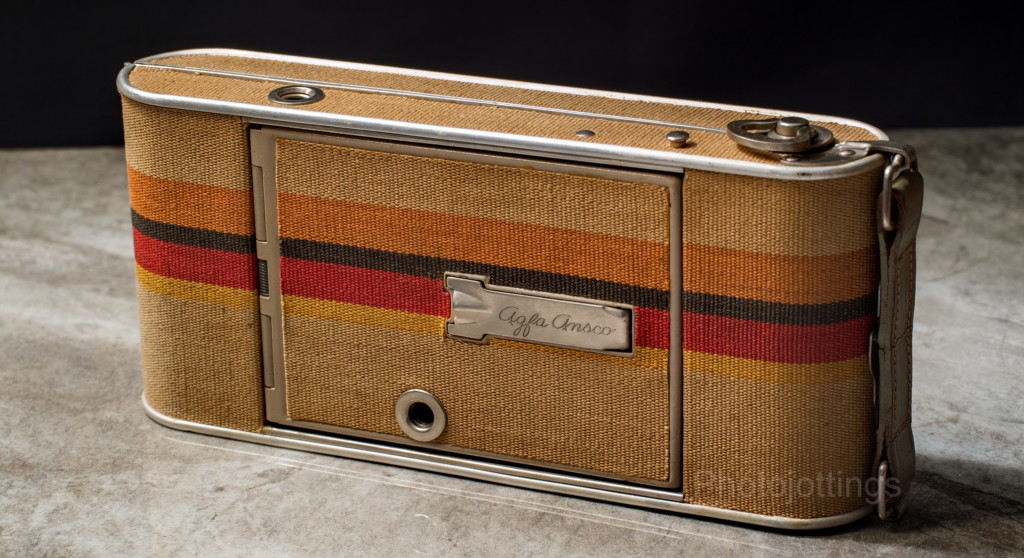
I have no idea what they call this variation of the repp covering, or what ‘repp’ is, but it seems to be quite durable, it’s still very clean and colorful after nine decades. Here you can see the vertical leveling foot that flips out for table top use, and the two tripod sockets. The little button on top is for opening the camera front, and the winding knob is off to the right.
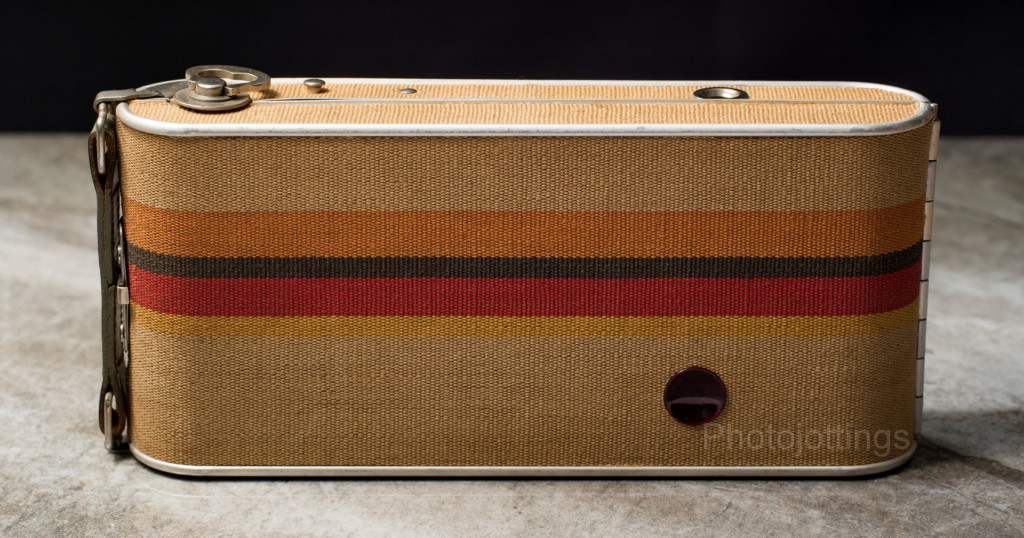
The back of the camera is unadorned, although the repp covering sure looks good. The little round red window is for centering the shot numbers and avoiding over-lapping exposures.
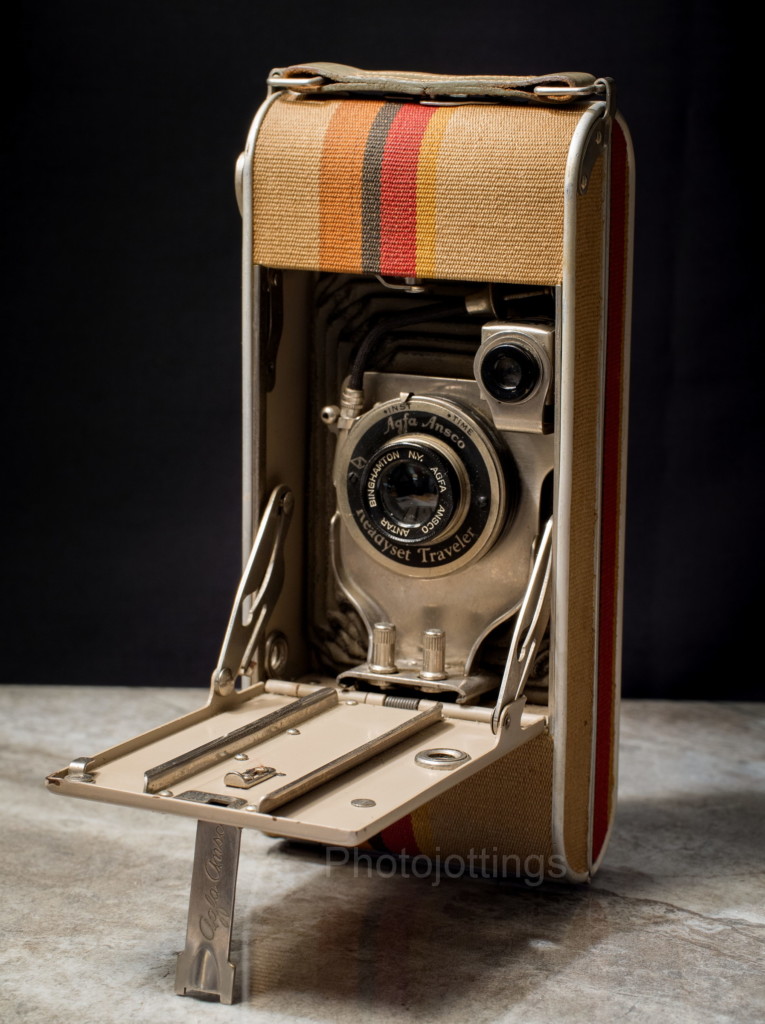
The front of the camera before the lens is extended. You can see the horizontal leveling foot at the corner of the base to the left, you flip it sideways for table-top use.
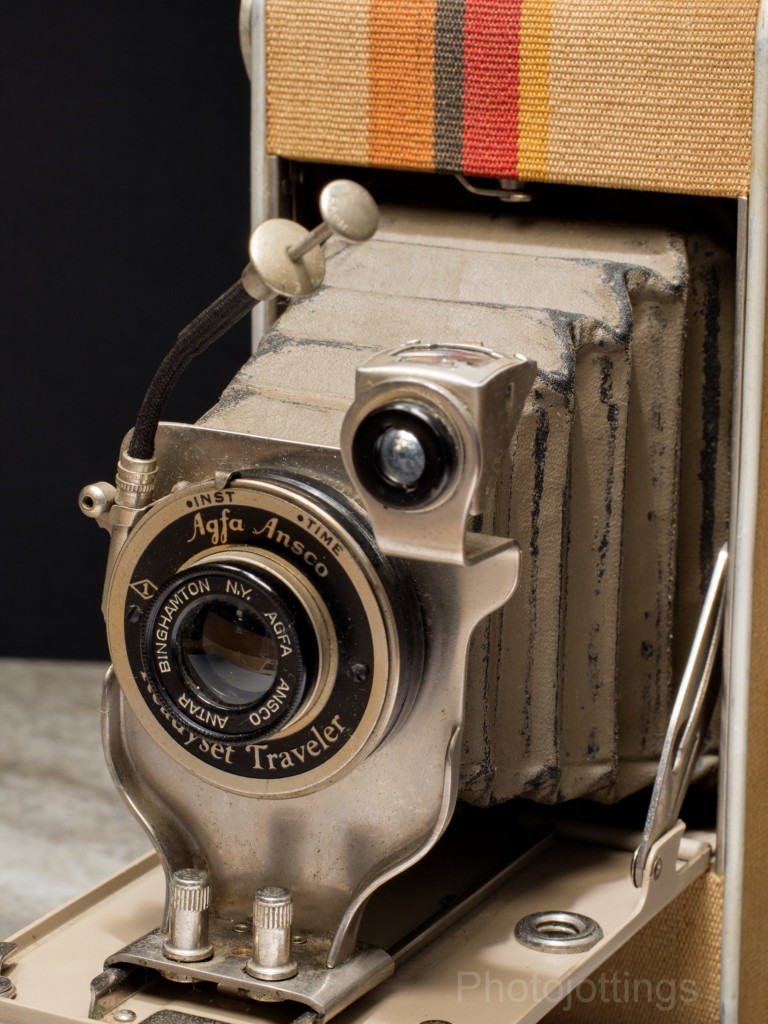
A close up of the lens shows the ‘INST’ and ‘TIME’ settings. Instant is about 1/32s on my copy, and time works by pressing the shutter once to open the lens, and pressing it again to close it. Below the lens are two long locking knobs, they unlock when pinched together and allow you to extend or retract the lens.
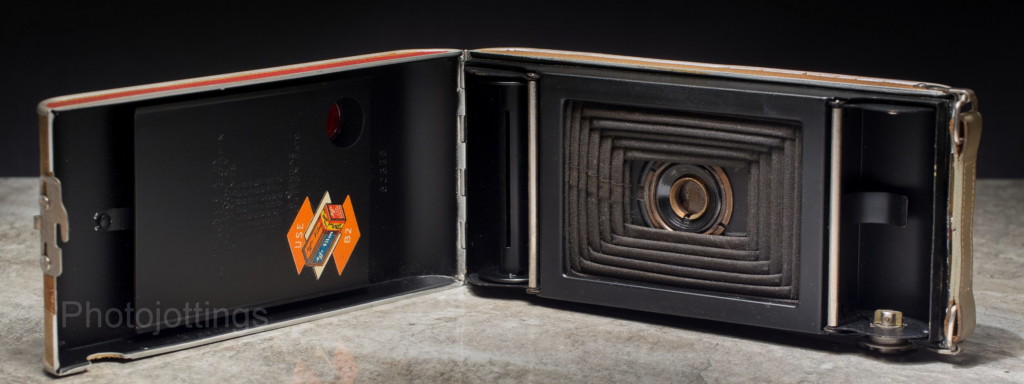
The back of the camera comes apart using a slide lock visible at the left. The film is loaded where the empty spool is now, and the take up spool goes to the right.
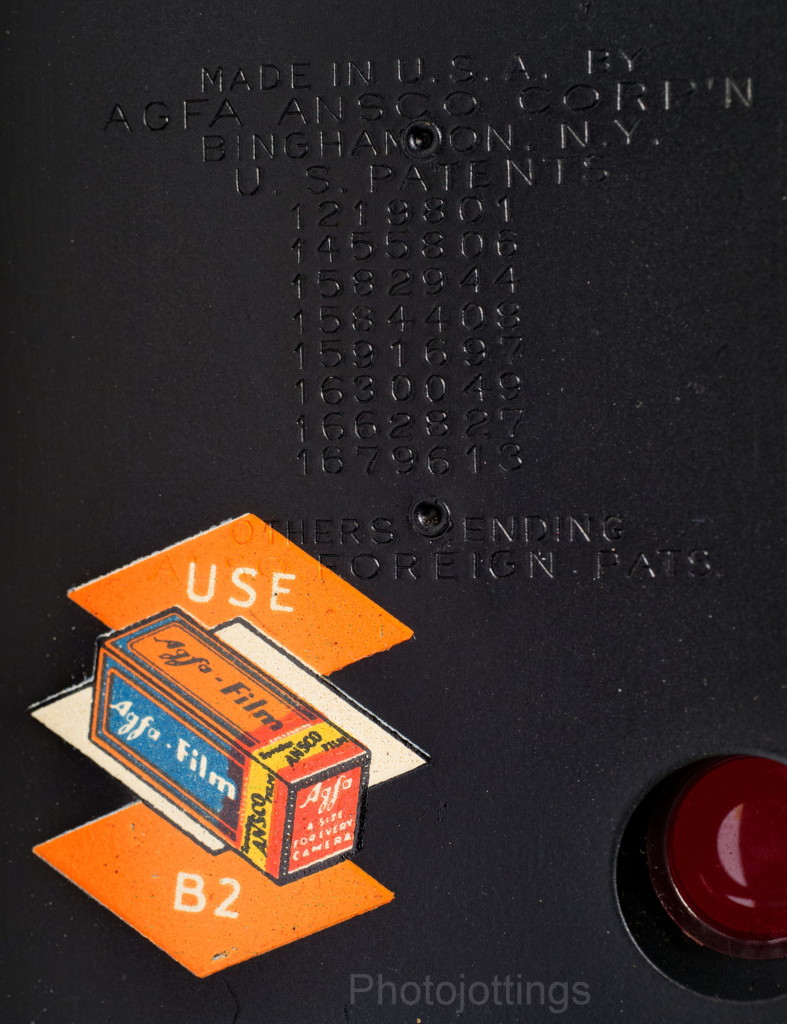
Agfa reminds you to buy Agfa brand B-2 film; it’s the same as 120 film.
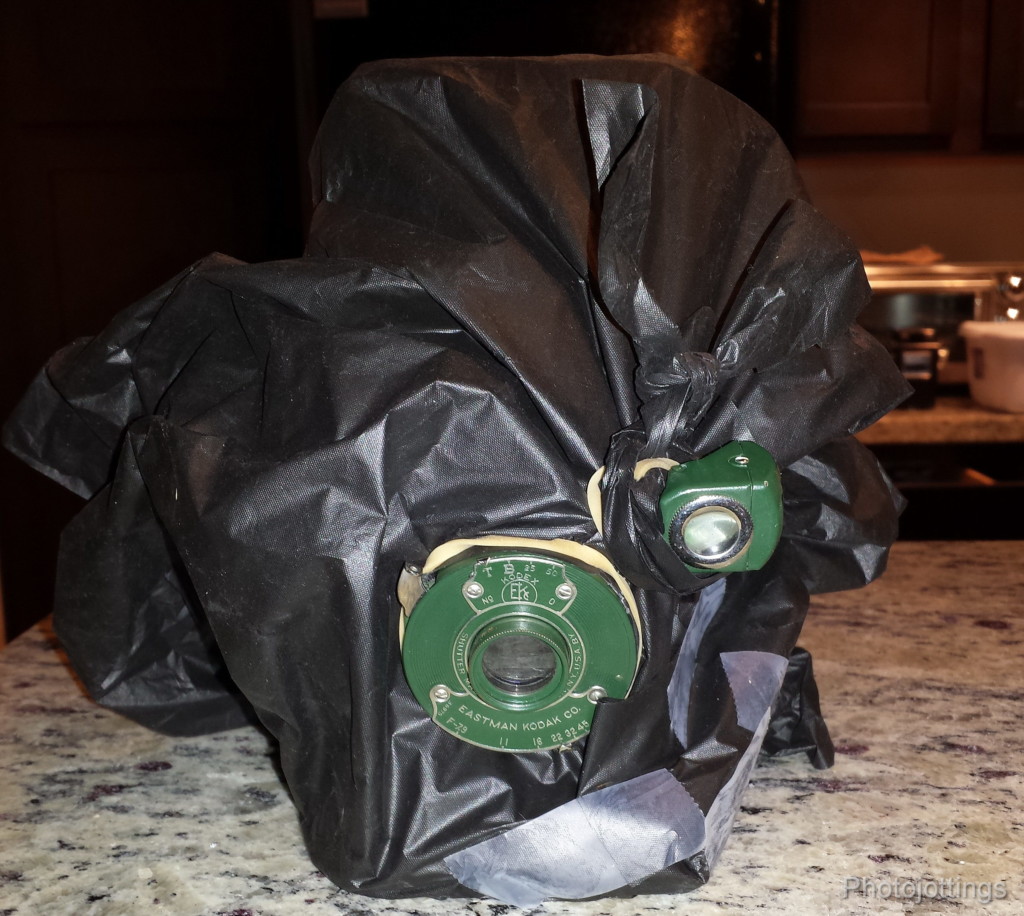
In order to take picture with my ‘Traveler’ camera with holes in the bellows I’d have to bag it like I did this one. It’s too much trouble, especially for what I consider a toy camera.
Conclusion.
The Agfa Ansco Readyset Traveler is a nifty looking camera, that’s why I bought it. It’s one of the few cameras I own that I won’t bother putting any film through because it’s almost in unused condition, and why risk messing up the beautiful repp covering with my greasy hands right? Also, I already know how the pictures are going to turn out based on experiences with other cameras similar to this one; they’ll be noticeably soft along the sides, and probably with a little camera jitter from the low shutter speed, but capable of making small prints. Well ho-hum, I’ll leave this one on the shelf and admire the beauty of it in my office.
If you’re going to buy one of these for taking snaps, you’re best bet for good photos would be Tri-X 400, T-max 400 for B&W, or for color try Kodak Porta 800. Look through the viewfinder, compose, hold steady and push the shutter button ever so gently! Oh, and don’t forget, there’s no double exposure prevention, so make sure to advance the film after each shot. Good luck!
Note; if you’re thinking of trying out one of these cameras, make sure it’s a ‘No. 1’ and not a ‘No. 1A’ it makes a difference as the ‘1a takes larger and obsolete 116 or 616 film.
That’s it for this review, thanks for visiting!